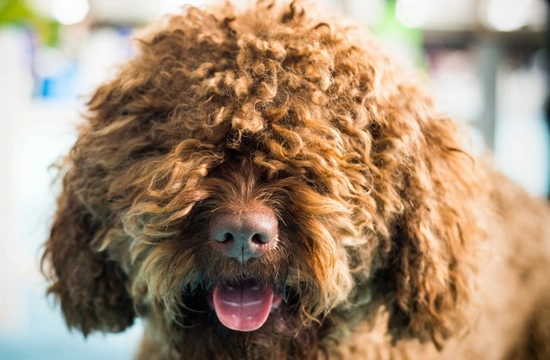
Introducing The Kennel Club’s newest recognised dog breed: The Barbet
The Kennel Club in the UK is the umbrella organisation that oversees the registration, records keeping and improvement of all of our recognised dog breeds – and the process involved in attaining recognition in the UK for a brand-new breed or a breed of dog from abroad that was not developed within the UK is long and thorough.
It is always exciting when a new dog breed gains formal recognition from The Kennel Club and can be registered and shown under the remit of the organisation’s management – and the Barbet dog breed is the latest addition to their numbers.
The Kennel Club recently announced that the Barbet dog – a French water dog breed – will formally receive UK recognition from the 18th April 2018. With this in mind, in this article, we will shine the spotlight on the Barbet dog and talk a little more about their temperaments and core traits. Read on to learn more.
More about the Barbet dog breed
The Barbet is a medium-sized dog breed that originated in France, and is a type of water dog, registered by the French Kennel Club in the retrieving, flushing, and water dogs category.
The name of the breed comes from the French word for beard, and these curly-coated and friendly-looking dogs certainly grow some rather impressive ones!
Despite the big step forward for the breed that attaining UK Kennel Club registration brings, the breed is still relatively rare, both in their home country and even more so further afield, so they are not a common sight in the UK – yet!
In terms of their rarity, registration figures from 2007 indicate that less than 200 new puppies of the breed were registered in that year worldwide – and whilst their numbers have grown somewhat since that time, they are still amongst the rarest and most uncommon of breeds, with around 70 of them in the UK at last count.
Whilst the breed has a known history going back for many centuries, in modern times, the first Barbet male to be brought to the UK didn’t make it over the channel until 2001, followed in 2007 by two females – and the majority of UK-bred Barbets are descendants of these original parent dogs.
Many Barbet owners and breeders also take place in international breeding programs, achieving mating matches with other dogs as far afield as Holland, Poland, the USA, and Canada.
What does a Barbet dog look like?
The Barbet is a medium-sized dog, with males standing up to 65cm tall at the withers and females up to 61cm, with an average weight range of 17-28kg.
They have a very classical water-dog appearance, with thick, curly coats that often grow quite long and that require a reasonable amount of grooming and tidying to keep them in good condition and avoid knotting.
Most dogs of the Barbet breed are black or brown in colour, although grey, white, red, and fawn are also permitted variants within the breed, as is a patched two-colour coat, as long as one of the colours is white.
Their thick, curly hair helps to trap air to provide a warming layer of insulation in cold weather, which also helps to repel water and keep the dogs buoyant whilst swimming, without causing them to get waterlogged and cold.
The Barbet dog personality
The Barbet dog has a slightly comical and very open and friendly expression, which is largely matched by their personalities. They are keen swimmers, as you might expect, and also love retrieving and outdoor pursuits, being unafraid to get cold and mucky and always keen to explore and play or work!
They make for excellent family pets thanks to their cheerful, outgoing and friendly personalities, and they are also a very intelligent breed that is quick to learn and actively enjoys training. They have a reputation for being keen to please and a pleasure to train, being obedient, engaged, and trying hard for their owners.
The Barbet dog is a lively breed that needs a lot of exercise, and they don’t thrive if left closed up in the home on their own all day, preferring an active life with plenty of company.
Outside of the UK, the Barbet can be seen competing in water dog trials and retrieving tests on the continent, where despite the relative rarity of the breed, they tend to excel and place well, making them a good option to consider for anyone considering getting a dog to take part in canine sport.
Is the Barbet a healthy dog breed?
Like all pedigree dog breeds, the Barbet has a heredity predisposition to suffering from certain genetic and conformation-based health issues that are passed down from parent dogs to their young.
These include hip dysplasia, epilepsy, entropion of the eye, ear infections, and hernia development. The small size of the breed’s gene pool and lack of completely unrelated dogs of the breed as a result somewhat elevates the risk factors for all of these conditions, as there are a finite number of dogs that can make for potential parent stock, making it harder to breed such problems out entirely.
However, The Kennel Club’s recognition of the Barbet may help to improve this issue with records keeping and data collation to assess breed health and improvement over time, so this is certainly an interesting breed to watch – but if you are considering buying a Barbet dog – and can actually find one for sale – make sure that you develop a complete picture of the dog’s health before committing to a purchase.



